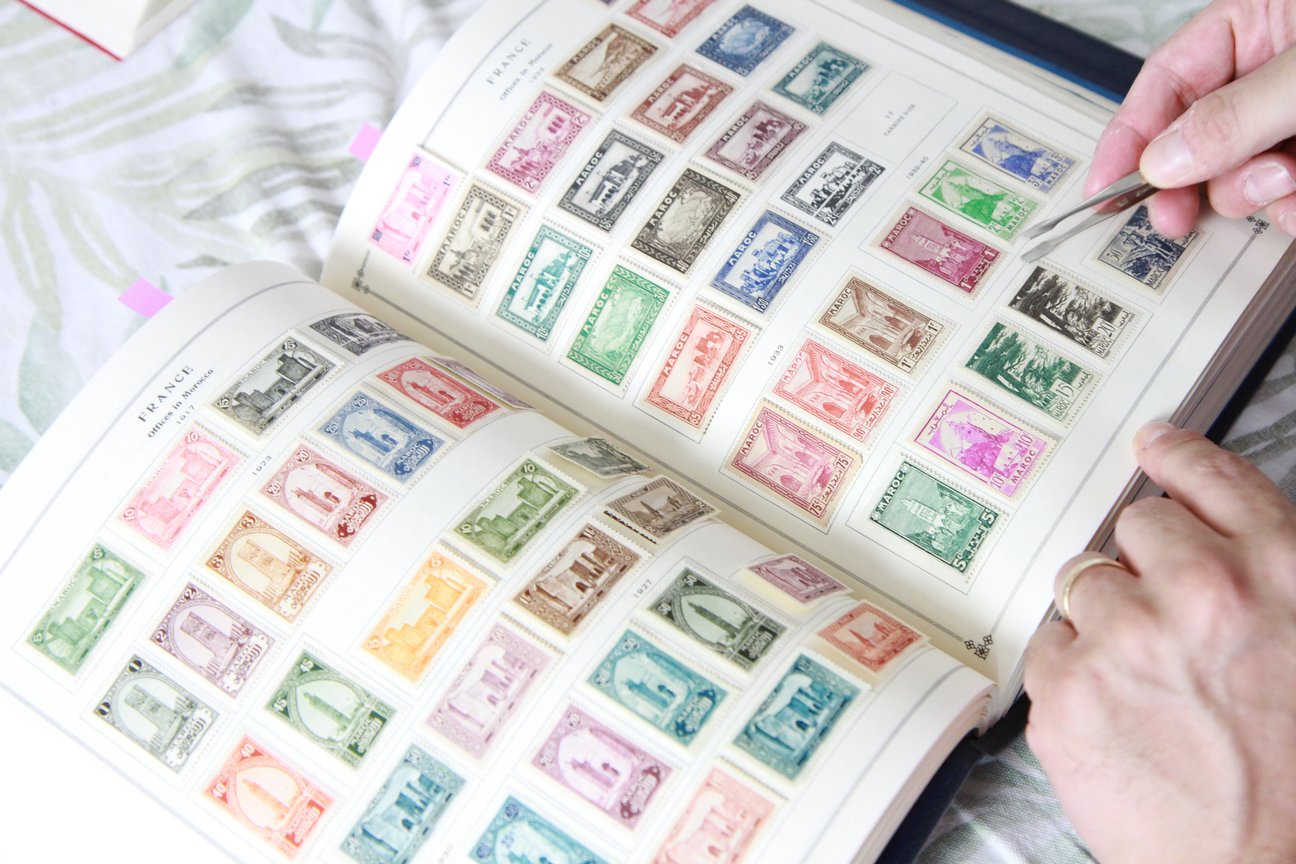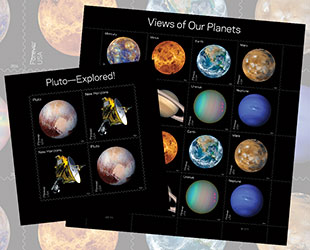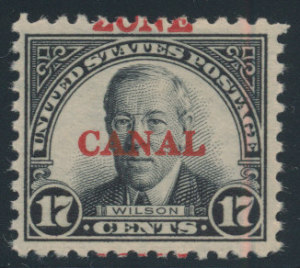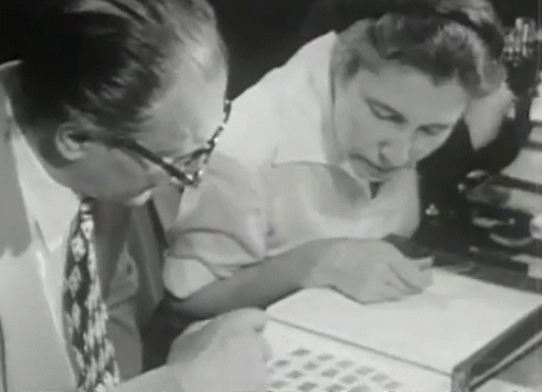Monthly Archives: May 2017
- Posted May 30, 2017Read more »The first stamp dealing Apfelbaum was Maurice Apfelbaum who listed his occupation in the 1910 US census as "Stamp Dealer." He began dealing when his son Earl was only four years old, and by the time Earl was ten, he had begun collecting stamps and was going around to dealer shops and bourses with his father. Stamp collecting was different one hundred years ago than it is today. Most stamp business was done at bourses or in dealer shops, that is face to face, and little stamp business existed outside of major urban centers. Collectors in the country saved up for their annual visits to New York, Chicago, or Philadelphia where they would go to the many stamp shops there and purchase a years' worth of collectibles. Earl and his father continued dealing throughout the teens and twenties, but it was not yet a full time business; rather they dealt their duplicates and did a little trading as so many collectors did in those days to offset their stamp collecting habit.
- Posted May 29, 2017Read more »
 The desire to collect is innate and probably relates to the gatherer instinct that differs humans from other primates. But in a world in which one can collect everything from antique barbed wire to Victorian pocketbooks, why do people collect stamps? The answer I think comes down to three factors- community, size and orderliness.
The desire to collect is innate and probably relates to the gatherer instinct that differs humans from other primates. But in a world in which one can collect everything from antique barbed wire to Victorian pocketbooks, why do people collect stamps? The answer I think comes down to three factors- community, size and orderliness.
First, most stamp collectors were introduced to the hobby by a relative or friend and the feeling one has about philately gets infused with the feelings one has about the early sharing of your hobby with that important person in your life. Second, one can collect at a pretty high level over a period of years and yet store the entire collection on a couple of shelves. Some other hobbies have this advantage, but few have it as clearly as stamps. Most collectibles are far larger and harder to store than stamps. A philatelic collection of thousands - Posted May 26, 2017Read more »Political and social scientists study stamp issues for clues to how governments view their history and evolution as societies. United States stamp issues are replete with historical themes and make much of our founders. Benjamin Franklin, because of his role as our first Postmaster, is on nearly a hundred different US stamp designs, and Washington, Jefferson, and other Founding Fathers are not much behind. The values that America was founded on—unity, liberty and justice for all—have always been our national aspiration, even if attaining these goals has been more problematic. Other nations have more difficult relationships with their professed national goals and heroes, and nowhere is this more evident than with India.The
- Posted May 23, 2017Read more »One of the more glamorous aspects of the old West was the Pony Express. Beginning for about eighteen months in 1860 the Pony Express raced letters across the American frontier from California to St. Joseph, MO where the letters entered the mail stream to their final destination. Their service was expensive, but it cut as much as two weeks off of coast to coast communication and was indispensable to business whose trading was time and event based. Much has been written about the Pony Express, and it is a fascinating story.This story is about a Pony Express cover. Several years ago two older sisters came to our office with a box of stamps. The collection, they said, was their father's.
- Posted May 22, 2017Read more »I first met Max Margolies in the mid 1960’s. At the time, I used to help out showing Auction lots at my father’s office on Saturdays. Stamp professionals didn’t specialize to the degree that they do today. There were a few US only dealers or British Commonwealth dealers but the majority of stamp sellers tried to buy and sell the world. There were two reasons for this. First, stamp prices were lower relative to the general economy and so stamp professionals such as Max Margolies needed a larger pool of stamps to buy and sell in order to make a living. And secondly, there were many more Public stamp auctions in 1960 than there are today. Thus dealers and collectors could have an opportunity to see and learn a far more comprehensive portion of philately than that which is possible today. “There are half as many stamps sold today as were sold 20 years ago “Max would say “and 20 years from now there will be half again. More collectors mean greater diffusion
- Posted May 19, 2017Read more »When one is avid about a field, it is common to set greater and greater challenges. This is the lure of Everest for climbers or of more and more difficult golf courses. I once knew a stamp collector who was also a fierce crossword puzzle enthusiast. He wrote puzzles in which the answers were all palindromes, that is words that are spelled the same backwards and forwards.Since I spend all day with stamps, the items that I collect are not exactly philatelic but have a philatelic flavor. I am an avid reader and enjoy classical music. I like covers and Postal History; so I have combined these interests by collecting covers and letters that have been autographed by writers and composers that I like (and can afford). The illustration accompanying this posting was the first item in my collection. I found it in a 25¢
- Posted May 18, 2017Read more »
 The Columbian Exposition set of 1893 (Scott #230-245) was the world's first commemorative set, and it has become one of the most popular sets not only in United States philately but in the world. But this was not always so. Stamp collectors tend to be a conservative group (at least in their philatelic tastes), and early reaction to the stamps was harsh. Philatelic writers of the 1890s found the designs fussy and not being used to pictorial issues they questioned the artistic merit of the designs. Up until then, all American stamp designs had pictured dead white men gazing at the collector from a portrait type of background. Scenes of Indians, ships, and even women were new to early collectors, and it took some time to get used to.Hobbies connect to our
The Columbian Exposition set of 1893 (Scott #230-245) was the world's first commemorative set, and it has become one of the most popular sets not only in United States philately but in the world. But this was not always so. Stamp collectors tend to be a conservative group (at least in their philatelic tastes), and early reaction to the stamps was harsh. Philatelic writers of the 1890s found the designs fussy and not being used to pictorial issues they questioned the artistic merit of the designs. Up until then, all American stamp designs had pictured dead white men gazing at the collector from a portrait type of background. Scenes of Indians, ships, and even women were new to early collectors, and it took some time to get used to.Hobbies connect to our - Posted May 16, 2017Read more »
President Franklin Delano Roosevelt
/about/president-franklin-roosevelt-with-his-stamp-collection-613514036-581164943df78c2c7380ad7a.jpg) President Roosevelt was called the “Philatelic President.” During his presidency from 1933 to 1945 he promoted stamp collecting in many ways. Roosevelt had a hand in every stamp issued during his period in office, suggesting some, designing many and giving his final approval on all issues. He arranged for the issuance of souvenir sheets at national stamp conventions and saw that many stamps had their first days at philatelic events.FDR,
President Roosevelt was called the “Philatelic President.” During his presidency from 1933 to 1945 he promoted stamp collecting in many ways. Roosevelt had a hand in every stamp issued during his period in office, suggesting some, designing many and giving his final approval on all issues. He arranged for the issuance of souvenir sheets at national stamp conventions and saw that many stamps had their first days at philatelic events.FDR, - Posted May 15, 2017Read more »Most collectors collect what they like for a variety of reasons that have nothing to do with the popularity of the area or the potential for financial growth in what they collect. Others collect whatever is the "hot" area hoping to ride the train of popularity to make their collecting not only fun but profitable. Both are fine ways to go about your hobby. But many want to collect an area that is fun, challenging, and currently inexpensive, and that has the potential for price growth greater than the hobby as a whole.When people ask me to recommend an area like this, the country of Pakistan usually comes to mind. First the demographics: Pakistan is the sixth most populous country in the world with over 160 million people. It has a developing economy and an increasingly
- Posted May 12, 2017Read more »
 Cut Squares and Entires (the Scott "U" numbers in the catalog) have always seemed to be less popular than they should be. They have several important specialty features going for them. They are scarce, attractive, and complex. There are hundreds of major numbers, and about 95% of them sell for under a few dollars. All in all, one would think that US Cut Squares would have far more collectors than they do. The reasons for their relative unpopularity relate to two main factors: First,collectors worldwide don't collect Cut Squares, and this impacts on the popularity of US Cut Squares around the
Cut Squares and Entires (the Scott "U" numbers in the catalog) have always seemed to be less popular than they should be. They have several important specialty features going for them. They are scarce, attractive, and complex. There are hundreds of major numbers, and about 95% of them sell for under a few dollars. All in all, one would think that US Cut Squares would have far more collectors than they do. The reasons for their relative unpopularity relate to two main factors: First,collectors worldwide don't collect Cut Squares, and this impacts on the popularity of US Cut Squares around the - Posted May 11, 2017Read more »
 Seigniorage is the profit that governments make on securities that they issue, on which they don't pay interest, and that are retained unused by the public. Cash in mattresses represents a form of seigniorage, and, more than anything else, old face value postage stamps held by collectors do as well. The money that collectors have tied up in mint stamps represents an interest free loan to our post office. And because most mint stamps held by collectors will never be used, the profit to the post office is the value of those stamps held by collectors (Private companies issue gift cards, and they are required by accounting rules to bring the unused portion of these cards into income—this is a sort of private seigniorage).
Seigniorage is the profit that governments make on securities that they issue, on which they don't pay interest, and that are retained unused by the public. Cash in mattresses represents a form of seigniorage, and, more than anything else, old face value postage stamps held by collectors do as well. The money that collectors have tied up in mint stamps represents an interest free loan to our post office. And because most mint stamps held by collectors will never be used, the profit to the post office is the value of those stamps held by collectors (Private companies issue gift cards, and they are required by accounting rules to bring the unused portion of these cards into income—this is a sort of private seigniorage). - Posted May 09, 2017Read more »
 Among the most interesting issues in philately are the classic first issues of Japan called the Dragons. Japan was a closed society for about three hundred years before 1854. Japanese leaders had made the decision that they wanted no contact with outsiders (as they saw what foreigners were doing to China), and the penalty for attempting to enter Japan could be death. Admiral Perry forcibly "opened " Japan (primarily to obtain a new trading partner for American goods), and Japanese leaders soon realized that their feudal social structure needed rapid modernization if the the Japanese were to compete in the modern world. Feudalism ended with the Meiji Restoration in 1868 (Meiji was the Emperor whose name was placed on the internal coup which ended the feudal military government that was called the Tokugawa Shogunate). And Japan modernized quickly. In 1871 Japan issued its first postage stamps, very nicely locally engraved stamps on fine native paper. These stamps have always been scarce but
Among the most interesting issues in philately are the classic first issues of Japan called the Dragons. Japan was a closed society for about three hundred years before 1854. Japanese leaders had made the decision that they wanted no contact with outsiders (as they saw what foreigners were doing to China), and the penalty for attempting to enter Japan could be death. Admiral Perry forcibly "opened " Japan (primarily to obtain a new trading partner for American goods), and Japanese leaders soon realized that their feudal social structure needed rapid modernization if the the Japanese were to compete in the modern world. Feudalism ended with the Meiji Restoration in 1868 (Meiji was the Emperor whose name was placed on the internal coup which ended the feudal military government that was called the Tokugawa Shogunate). And Japan modernized quickly. In 1871 Japan issued its first postage stamps, very nicely locally engraved stamps on fine native paper. These stamps have always been scarce but - Posted May 08, 2017Read more »
 Of the major worldwide powers in the philately era (that is, since 1840), the least imperialistic has been the United States. Great Britain and France had between them hundreds of imperial philatelic entities. Germany was a big player, and even Italy, which had more of an appetite for conquest than the digestion, had fifty or more imperial philatelic areas for which she issued stamps. Partly because our own internal markets were so large, partly because of immigration, partly because of endless land to be developed, and maybe a bit because of our democratic aspirations, America was a far smaller player in the Imperial game than our European competitors.
Of the major worldwide powers in the philately era (that is, since 1840), the least imperialistic has been the United States. Great Britain and France had between them hundreds of imperial philatelic entities. Germany was a big player, and even Italy, which had more of an appetite for conquest than the digestion, had fifty or more imperial philatelic areas for which she issued stamps. Partly because our own internal markets were so large, partly because of immigration, partly because of endless land to be developed, and maybe a bit because of our democratic aspirations, America was a far smaller player in the Imperial game than our European competitors.
- Posted May 05, 2017Read more »
Thematic stamp collecting along conceptual lines has never really caught hold. There was a great gold medal collection making the rounds of the APS Champion of Champions shows several years ago entitled "Murder" where the collector sought to portray how murder was shown on stamps from individual murderers to genocide (such as the Holocaust). But few other thematic collections have tried the "concept" route, and today we are mostly stuck with thematics such as Birds on Stamps or Disney which really only use stamps as pictures in a scrapbook to illustrate the collection's thematic point. From a historian's or social scientist's perspective, a good thematic collection could be far more satisfying than traditional philately. Research opportunities in most mainstream philatelic areas have either been done many times or else are relegated to the extreme fringes of postal history or plate varieties. Many subjects have never
- Posted May 04, 2017Read more »Women and men probably collect things about equally. Women, however, just don't collect stamps. Philately has long been a man's domain. After the passing of the "timbremania" phase about 1860, the vast majority of stamp collectors, and certainly the vast majority of more serious philatelists, have been men. Of the hundreds of early philatelic books and articles that I've read only a few have been penned by women.
 Of the people who have listed themselves as "followers" of this blog, all are men. And the APS membership is 90% male. I can't think of any serious articles about stamps written by women before 1960. Even the greatest female collector of the last century,
Of the people who have listed themselves as "followers" of this blog, all are men. And the APS membership is 90% male. I can't think of any serious articles about stamps written by women before 1960. Even the greatest female collector of the last century, - Posted May 02, 2017Read more »
The value of most United States stamps have been falling over the last twenty years, and the CPI has been rising. Critics have claimed that the CPI overemphasizes increases in food, fuel, and housing (until the last few years, at least). We have not understood that price increases have been commodity driven and that many existing goods and non-commodity goods have remained stable in price or even declined, just as stamps have. I refer, of course, to the economic metric known as the "Lawn Blower Index" (the "LBI"), a personal index of prices and inflation which I compiled yesterday. Specifically, it was time to blow some leaves and clean out my garage yesterday, and my gas powered leaf blower was broken. About twenty years ago, I bought this low end gas blower for $149. Home Depot had one yesterday at $99, and it is about ten times easier to use, lighter, and blows more leaves per gallon.
- Posted May 01, 2017Read more »There is one entire country under the United States collecting umbrella that has issued hundreds of stamps, which is popular on two continents, and which is completable by even collectors of modest means. The country is the Ryukyu Islands which were captured during WWII by the United States at an enormous loss of life and which were administered by us as a territory until 1972. The stamps of the Ryukyu Islands have a Japanese flavor and are avidly collected in Japan. There is one great rarity, Scott #17, which is a provisional that was issued due to a rate change. Considering its rarity and that the stamp is from a country that is popular in both Japan and the United States, it sells for far less than it should even though its selling price NH is above $1,000. I have always found the political and philatelic history of the Ryukyu Islands interesting. When Jimmy Carter negotiated a treaty which returned sovereignty of the Canal Zone to Panama in 1979, he was excoriated for giving away American








